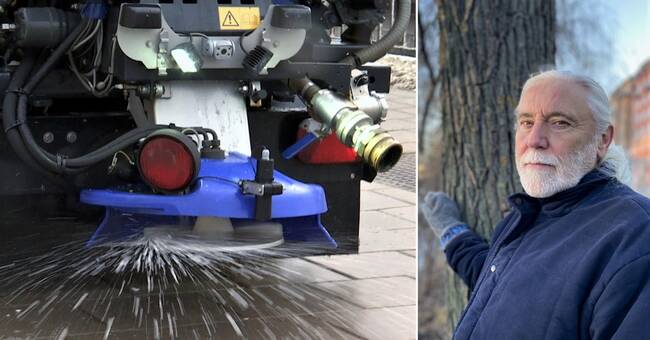- I'm worried about the amount of salt that is spread.
According to my calculations, it can be just over 3 hectares per square meter every winter, says Björn Embrén, former tree specialist at Stockholm City's traffic office.
For over twenty years, Björn Embrén has worked with creative solutions to make trees in Stockholm feel better.
His tree planting methods are indicative both in Stockholm and nationally.
But the work with healthier trees is threatened, he says, because the salt inhibits the development of both old and newly planted trees.
And in the long run, the trees risk dying because the soil becomes compact and the roots are sensitive to drought.
- The visible sign of salt damage is when the tree's leaf edges turn brown already in July and August, he says.
Salt damage to trees
It is a known fact that trees and plants can get salt damage from waste salting, says traffic councilor Daniel Helldén (MP).
But how much salt accumulates in soil and plant beds or how it affects can not be said because the traffic office has not made measurements so far.
- We see that there are problems with salt and some cycle paths we are considering stopping waste salt.
But we want people to cycle during the winter and then we have to find good cycle paths, he says.
Trafikborgarrådet Daniel Helldén (MP) The newly planted trees on Vasagatan will now be examined to see how waste salt affects the trees.
Photo: Jens Larsson / SVT
The city's tree damage has several explanations according to Daniel Helldén (MP).
This may be due to poor conditions from the beginning, that the trees do not have sufficiently large plant beds, shaft damage or the drought of recent years.
The City of Stockholm will now review whether there are improvement measures regarding salt use.
In the spring, an extended inspection is planned on certain sections where there is waste salt, to see if there is any difference compared to other sections.
Analyzes of the relationship between stormwater and trees must also be made.

